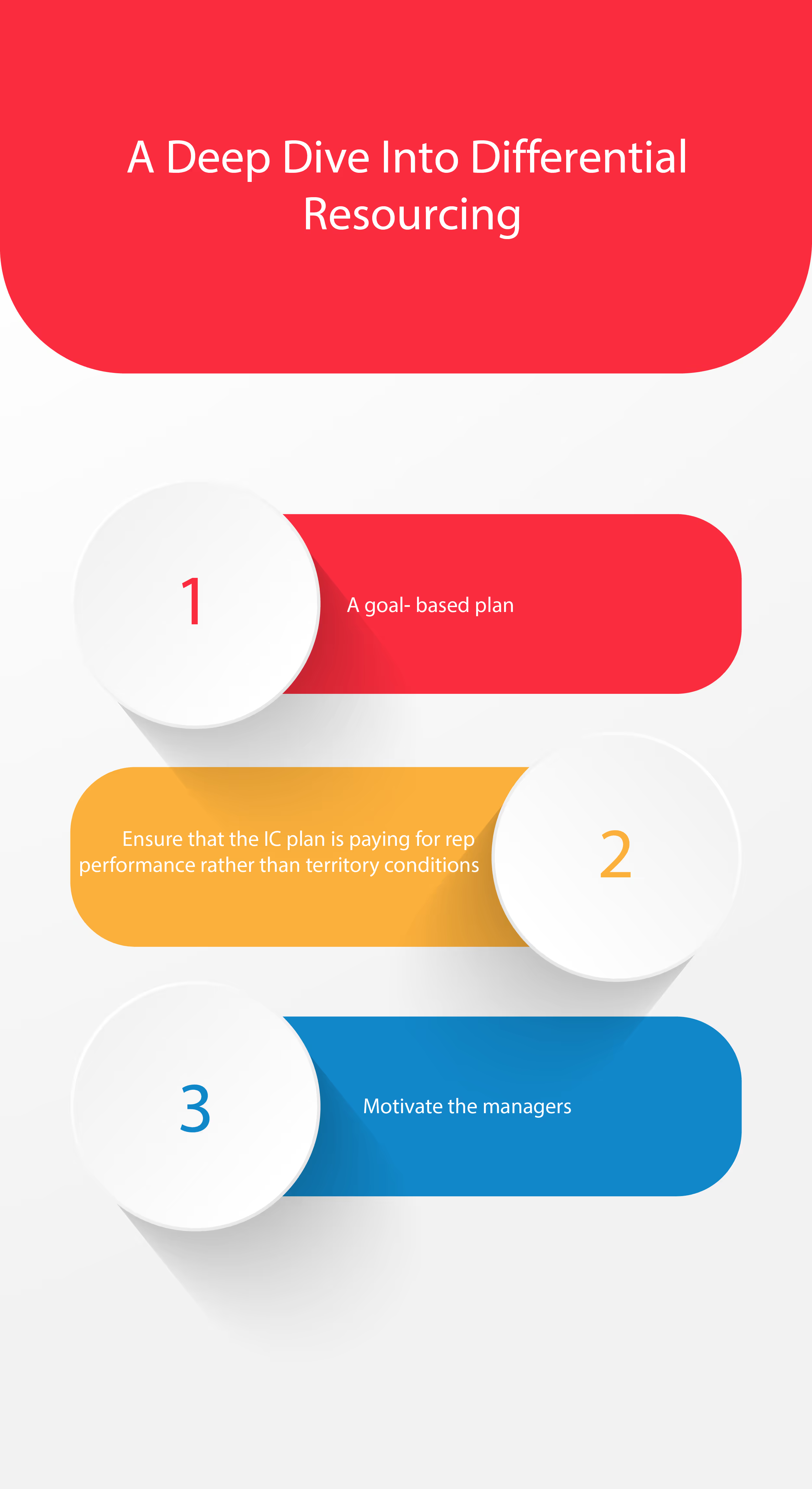
Blog
A Deep Dive Into Differential Resourcing
November 24, 2022


Key Insights
Incentive compensation is the largest component of any organization’s total labor costs- approximately 70%- , and that includes pharmaceutical sales. As new sales models continue to make their way into the pharma landscape, companies need to transform their IC plans for these new models to reach full potential.
The headliner in the pharma game continues to be the ‘Differential Resourcing’ sales model. More and more pharma companies are actively strategizing their sales with Differential Resourcing as the dominant approach.
But what is Differential Resourcing, exactly?
The underlying principle is that Differential Resourcing aims to structure the sales model to fit in with the local market conditions. There are many ways in which switching to this strategy from earlier traditional models would benefit the pharma companies-
- Differential Resourcing has the potential to create territory footprints in order to bring some stability to the sales process. This in turn, allows the reps to maintain customer relationships.
- The idea of a national sales team selling similar products has now run its course. The need is to replace these with sales forces that are more locally oriented, and therefore are flexible and diverse.
- Instead of a uniform plan, leaders are given the space to vary the number of reps, the products that they are selling, and the territories the reps operate in.
- The model by diversifying can jump-start sales of mature products and benefit the launch of new ones, thereby holistically improving sales.
While it is true that Differential Resourcing has increasingly become popular among pharma circles, it is certainly a daunting task to implement this model.

Think of it this way- Before differential resourcing came to the fore, building incentive compensation plans for pharma companies had been straightforward. Reps operating in different territories were selling the same product. For example, reps in Territory 1 and Territory 2 both sold medicines for diabetes. A sales leader could easily identify the top-performing reps. Now with Differential Resourcing, reps in one sales territory would only sell the diabetes treatment, while reps in another would carry the diabetes treatment along with two other products. The challenge with Differential Resourcing is that if an IC leader couldn’t design and model an incentive compensation plan that matched the sales model, a sales commission calculator wouldn’t be as effective as the company envisioned.
The bottom line is that even though Differential Resourcing is more complex than traditional models, building an incentive compensation plan to support differential resourcing is far simpler than it appears upon first glance. Sticking to best practices can be the first logical step in this journey.
A goal- based plan

Differential Resources use a drill-down approach where sales reps are selling keeping in mind local needs. A drill-down approach like this works best when goals are clearly defined. Sticking to some old formulas that work like the SMART goals works.
- Is the goal specific?
- Can you measure the performance of the goal?
- Is the goal attainable?
- Is the goal relevant to the organization?
- What is the timeframe for achieving this goal?
In fact, many organizations are now taking the leap from SMART to SMARTER by adding evaluate and re-evaluate to the acronym. Goals should be constantly reviewed and evaluated to make sure they remain realistic and relevant.
Ensure that the IC plan is paying for rep performance rather than territory conditions

What essentially happens in Differential Resourcing is that reps may carry the same basket of products in two different territories, but they may have different priorities. One rep may be promoting a hero product while another rep may be prioritising many products with low potential. A third one may be selling both the hero product and one low-potential product. Reps should be given a level playing field in this case so that they can maximise their effort.
In order for the reps to perform at their optimal level, the compensation plan has to be designed in a way that they are motivated to hit targets. Depending on local selling needs, incentive needs to vary and match the effort put in for each product. Goal-based incentive planning in line with traditional models does this to an extent, but in differential resourcing, the difference is that it’s done at a more granular level, i.e., the rep level. Incorporating a Win percentage calculator further refines this approach, allowing for a more nuanced evaluation of individual performance and ensuring that incentives align closely with the sales success achieved by each representative.
Motivate the managers
Differential Resourcing puts the management in the spotlight, with the managers having a say in how reps are assigned territories and products. Manager compensation, therefore, needs to be adjusted as well. One way to do this would be to allocate some of their compensation to a management by objective (MBO) plan. The MBOs would reward managers whose differential resourcing decisions benefited the company. Proper training and sample programs will also go a long way.
Differential resourcing cuts costs, improves reps’ performance and improves job satisfaction. Though many pharma companies are initially hesitant, once they understand and implement the differential resourcing plan, there is no looking back.
Kennect’s fully automated ICM solution leverages a data-driven approach to build, run and automate your incentive compensation plans to create transparency and achieve operational efficiency. Kennect helps you break the silos of your comp system by seamlessly integrating across CRM, ERP and HRIS and is designed to work with new models.
Book a demo with us today to learn more about how we can help you with implementing newer, more complex sales models!
ReKennect : Stay ahead of the curve!
Subscribe to our bi-weekly newsletter packed with latest trends and insights on incentives.
Thank you! Your submission has been received!
Oops! Something went wrong while submitting the form.
Your data is in safe hands. Check out our Privacy policy for more info






%20(1).avif)







